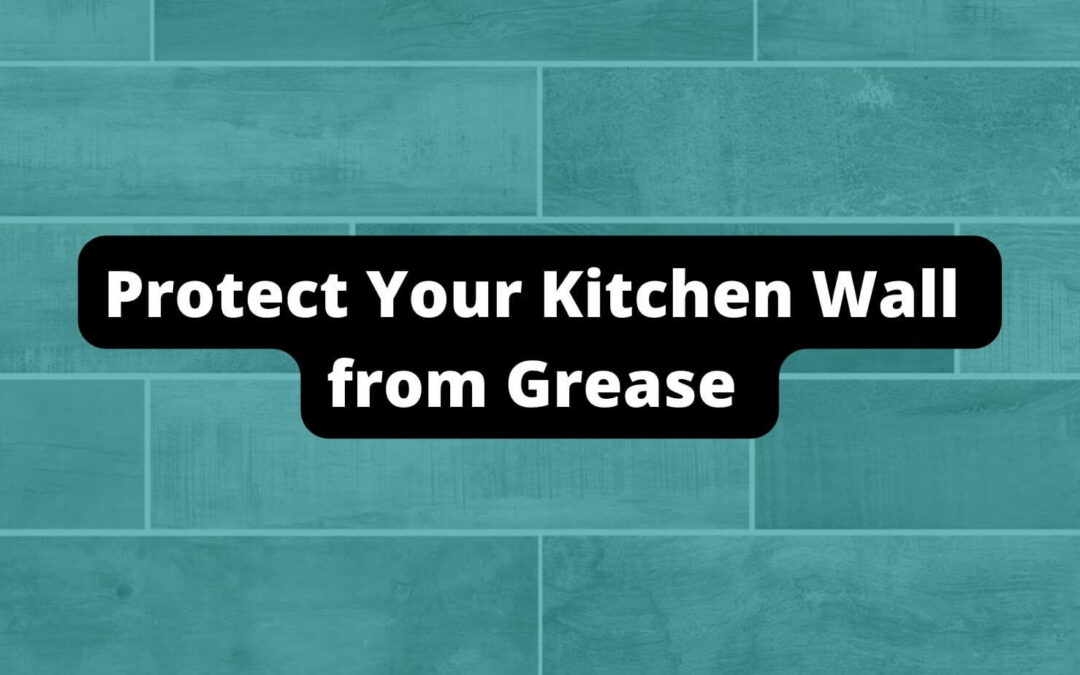Gradually Kitchen Wall Become Greasy
Oil is one of the most necessary items in cooking. We have to use oil in most of the cooking items. However, one of its frustrating drawbacks is how quickly it can turn your kitchen into a greasy mess.
Gradually these oils make the kitchen wall greasy. These greasy walls destroy the beautification of the kitchen wall. Also, greasy walls spoil the food taste. So yes, Greasy splatters can be a real problem.
Cooking grease can stain coatings, paints, and wallpaper. The scrubbing of hard-to-reach surfaces isn’t appealing to anyone. Many manufacturers of cooking supplies make devices that keep your walls clean while you cook. Moreover, everyone can find something that fits their budget. Furthermore, you may want to invest in some form of splatter guard to protect your walls.
You have come to the right place if you are interested in protecting kitchen walls from grease. Learn the methods in this article to prevent it from happening to you in the future. As soon as you finish cooking a meal, you notice that grease splatters have covered your wall.
You can do a few things to protect your kitchen walls from grease and keep them clean and fresh. Below are some tips for protecting your kitchen walls. However, there are several methods you can use to avoid this and keep your kitchen walls clean.
Ways to Protect Kitchen Wall from Grease
- Put a splatter guard or splatter shield behind your stove
- Cover your frying pans with a splatter screen
- Use proper venting to reduce grease
- Use gorgeous wallpaper in your kitchen
- Use an Oil-based paint that is easy to clean
- Use a primer under your top coat of oil-based paint
- Use appropriate smooth kitchen wall tile
- Remove grease with a cleaning mixture
- Use a product like Trisodium Phosphate – TSP
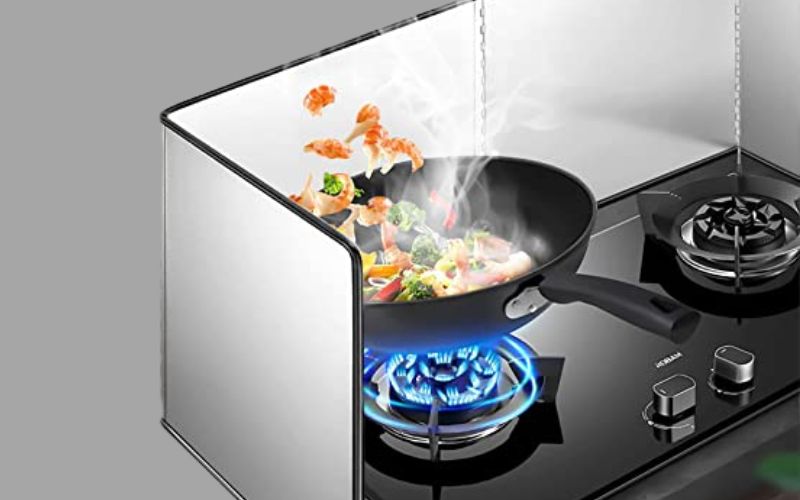
Put a splatter guard or splatter shield behind your stove
We recommend using oil splatter guards over pans frying food to protect your backsplash from grease. Splatter guards are one of the most convenient ways to protect your kitchen wall from grease, though they can be difficult to clean. In addition, you should have a backsplash behind the stove to protect it from grease and cooking splatters that could damage the surface.
Similar to splatter guards, splatter shields prevent grease from spreading around pans. Splatter shields are still very helpful, but they take up quite a bit of space and obstruct the view.
In addition to using splatter guards, splatter shields, and pan lids as a barrier, you should also use a splatter guard. Another option is to use your oven or a pressure cooker or place old wallpaper against your wall to protect it during the cooking process.
Three sides of these metal screens protect your walls from all directions, and each side stands independently. You can also use them as grill covers. Some metal barriers are a single piece, while others are composed of three pieces hinged together, making an adjustable barrier.
Material for the backsplash should be durable, nonabsorbent, easy to clean, and not discolored easily.
A stainless steel backsplash creates an elegant, modern appearance. The wall behind your stove can be protected from cooking splatters with flat panels attached to the wall. Additionally, stainless steel backsplashes can be patterned or textured for a decorative accent in your kitchen.
Various sizes of splatter guards are placed directly above pans. In addition, a metal frame serves as a barrier between your kitchen and the pan by preventing oil from escaping.
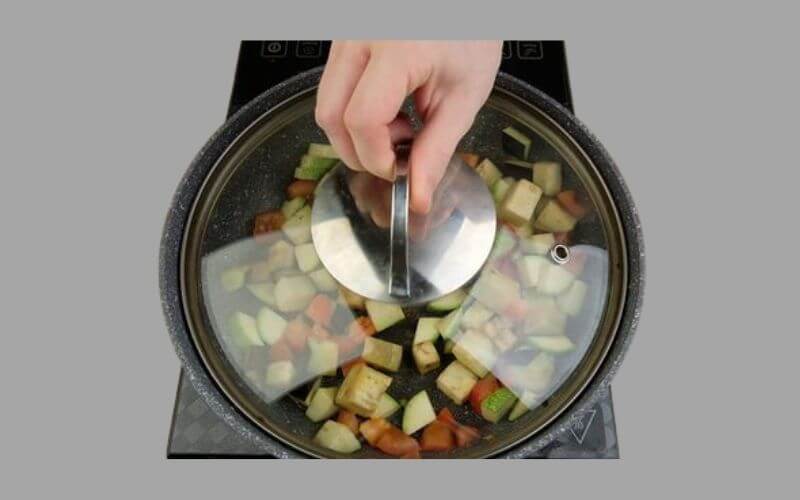
Cover your frying pans with a splatter screen
Are you tired of all the grease splatters on your stovetop while frying? Cover your frying pans with a splatter screen while you cook. Perhaps, you’re tired of dealing with cooking oil flying out of your pan. If that’s the case, you need a splatter screen for the frying pans in your kitchen.
These screens are made of mesh and designed to clean up easily. Splatter screens are available in various sizes to fit different pans, and you can find them at a wide range of price points.
Perhaps, you’re tired of dealing with cooking oil flying out of your pan. If that’s the case, you need a splatter screen for the frying pans in your kitchen.
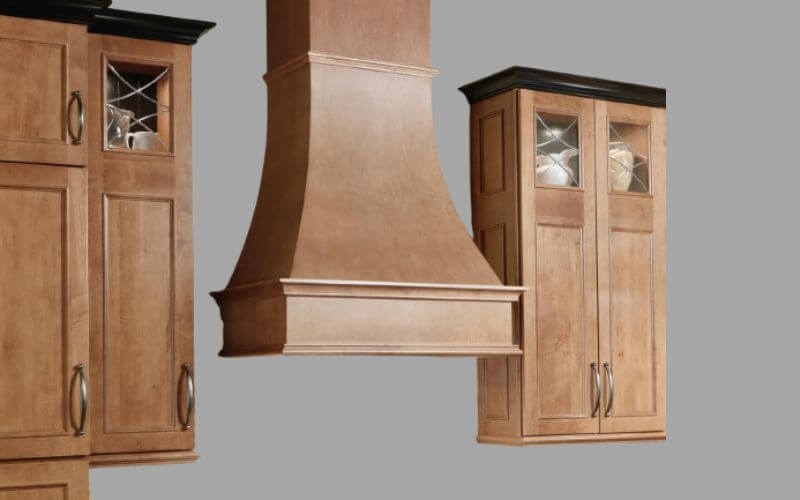
Use proper venting to reduce grease
Have you ever noticed how the cabinet above your stove gets greasy? This is because when you cook, small grease vapors become air-bound.
The grease particle, which floats like dust, adheres to all surfaces it touches. So even though this method won’t prevent grease from ending up on your walls 100%, it is extremely effective at reducing its reach. Using a range hood with a CFM rating of 600 or higher is also helpful (and I am not talking about venting your issues) to prevent the spread of fine grease particles.
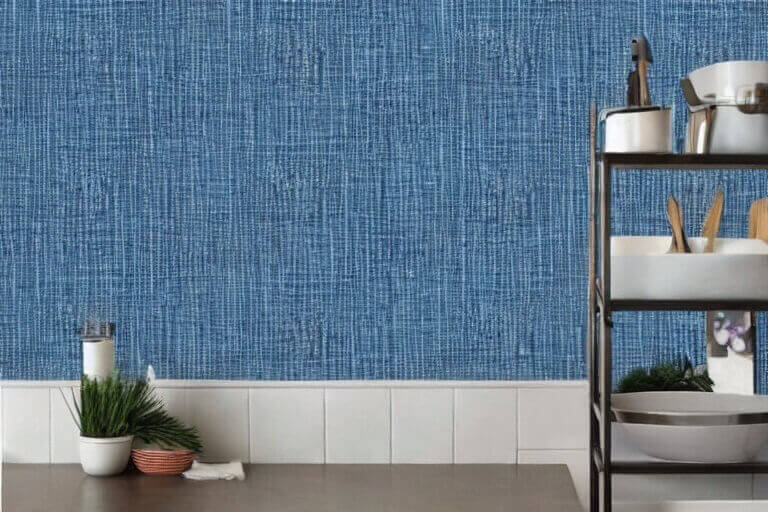
Use gorgeous wallpaper in your kitchen
You can decorate any room with wallpaper (and it’s also practical). It’s an easy way to protect walls from grease stains.
Suppose you don’t want to buy new kitchen appliances, tape wax paper on your walls while you cook. Choose a tape that is easy to remove and will not damage your walls. Use wax paper on your counters to provide additional protection.
Wallpapering a kitchen might seem like a recipe for disaster with its frequently humid atmosphere, cooking smells, grease, and food splashes.
It is common for homeowners to avoid wallpaper in the kitchen for fear of it getting dirty or peeling away due to moisture. Yet, wallpaper is a great way to add color, texture, and the latest trends to kitchens, explains Alex. ‘For lovers of pattern, the sheer breadth of designs available on wallpapers is incomparable.’
The days when the wallpaper was used exclusively in living rooms and bedrooms are long gone. As wallpaper technology and design advance constantly, wallpaper has evolved beyond mere backsplash covers in kitchens worldwide.
However, only if you choose a paper that best suits your needs. Vinyl wallpaper is great for protecting walls from oil spills. One of the best things about it is that it is not permanent. You can change it when you feel like changing it. Vinyl is designed for easy installation at home, making it an ideal choice for homeowners who would rather save money by doing their projects.
You can choose from a variety of colors. So you can find the perfect match for the color of your room and keep it stain-free forever. However, you do not always need to cover the entire wall with vinyl wallpaper. Instead, you can paint one wall section and cover the rest with wallpaper to give your kitchen a new look.
To protect a wall in a rental property or somewhere where you need a temporary solution to prevent grease from getting on the wall, you can attach a layer of wallpaper or fabric to the wall.
A piece of tape that won’t leave any marks behind would be the best way to secure this to the wall.
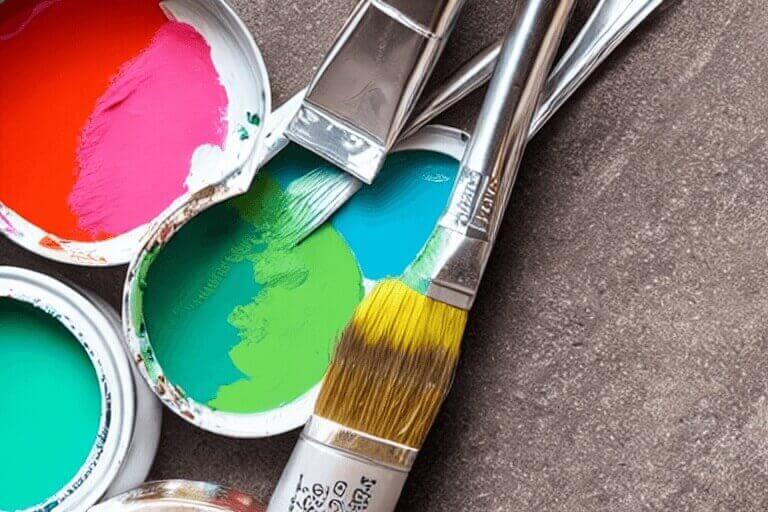
Use an Oil-based paint that is easy to clean
You can decorate any room with wallpaper (and it’s also practical). It’s an easy way to protect walls from grease stains.
Suppose you don’t want to buy new kitchen appliances, tape wax paper on your walls while you cook. Choose a tape that is easy to remove and will not damage your walls. Use wax paper on your counters to provide additional protection.
Wallpapering a kitchen might seem like a recipe for disaster with its frequently humid atmosphere, cooking smells, grease, and food splashes.
It is common for homeowners to avoid wallpaper in the kitchen for fear of it getting dirty or peeling away due to moisture. Yet, wallpaper is a great way to add color, texture, and the latest trends to kitchens, explains Alex. ‘For lovers of pattern, the sheer breadth of designs available on wallpapers is incomparable.’
The days when the wallpaper was used exclusively in living rooms and bedrooms are long gone. As wallpaper technology and design advance constantly, wallpaper has evolved beyond mere backsplash covers in kitchens worldwide.
However, only if you choose a paper that best suits your needs. Vinyl wallpaper is great for protecting walls from oil spills. One of the best things about it is that it is not permanent. You can change it when you feel like changing it. Vinyl is designed for easy installation at home, making it an ideal choice for homeowners who would rather save money by doing their projects.
You can choose from a variety of colors. So you can find the perfect match for the color of your room and keep it stain-free forever. However, you do not always need to cover the entire wall with vinyl wallpaper. Instead, you can paint one wall section and cover the rest with wallpaper to give your kitchen a new look.
To protect a wall in a rental property or somewhere where you need a temporary solution to prevent grease from getting on the wall, you can attach a layer of wallpaper or fabric to the wall.
A piece of tape that won’t leave any marks behind would be the best way to secure this to the wall.
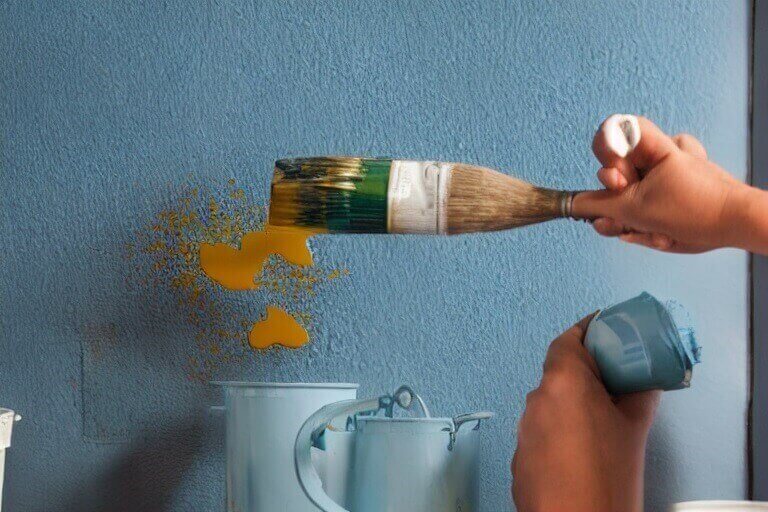
Use a primer under your top coat of oil-based paint
Primers are an excellent way to increase protection against grease by helping seal off any porous areas on your wall before applying additional layers of paint. For example, use a primer before painting your kitchen walls with oil-based paint. This will accentuate the durability of the wall and make it less likely that grease stains or water damage can penetrate through these layers. Also, primers often come in neutral tones, which are great for any color scheme.

Use appropriate smooth kitchen wall tile
Between choosing a layout, appliances, and a color scheme, there’s a lot to consider when designing or sprucing up a kitchen. And that’s exactly why we’re focusing on the fun part right now: a backsplash, which refers to the kitchen wall material. Backsplashes can span the entire wall, be a pop behind the range, or cover the area between the countertops and cabinets.
Kitchen tiles may also be an option for protecting your walls from grease stains. Most people prefer tiles since they are easy to clean and look great. At the same time, tiles do not protect your walls from grease stains. You can at least prevent any possible damage by placing a protective layer between the wall and tile, which is optional. To do so, you need to buy grease-resistant paint, which you can find at any DIY store.
Some people also use kitchen wallpaper as an overlay over the tiles. However, it is important to note that using wallpaper may cause more damage to the tiles because they’re difficult to peel off. You can also paint the tile with a layer of paint made for wall tiles resistant to grease.
If your kitchen walls have already been damaged by grease, then try to get them repaired before placing the tiles. This is because once you place your kitchen wall tile, it will be difficult to repair any damage without removing them first (which is hectic in most cases).
Remove grease with a cleaning mixture
Place some warm water in a bowl (about two cups). Then add the baking soda until the mixture is thick but still runny enough so you can apply it with a paintbrush. Finally, you can begin painting away all grease stains on your wall by using a clean paintbrush and following the direction of existing cracks or bumps.
Also, ensure you have removed all loose pieces from your wall before applying this mixture to prevent damaging it. Lastly, let the mixture dry on your walls for at least ten minutes before wiping it away. This process should be repeated for three consecutive days for better results.
Additionally, you can use an all-purpose cleaner to clean grease off your walls, provided that it is ammonia-free and safe to use on your kitchen’s surfaces. After cleaning with the cleaner, clean your walls with a wet cloth or paper towel. Next, rinse the walls thoroughly with an all-purpose cleaner before applying this mixture of baking soda and water.
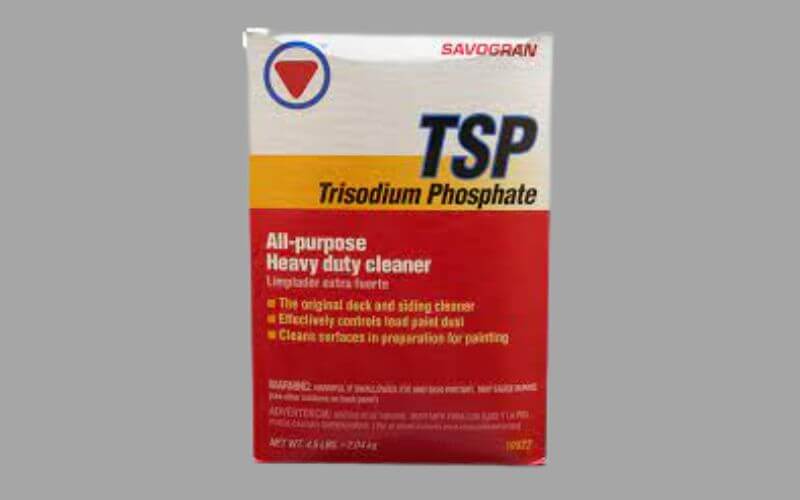
Use a product like Trisodium Phosphate – TSP
In preparation for a paint job, Trisodium Phosphate can be used to clean and de-gloss painted surfaces and remove peeling, flaking old paint. In addition, when removing an old stove or fridge from the wall, TSP is useful for cleaning stubborn grease and dirt.
TSP is a great solution for cleaning tough messes. You mix this powder with water to make a thick paste. After that, apply it to your kitchen wall with a brush or roller and let it dry for about 20 minutes. Before painting the walls with oil-based paint, rinse the walls thoroughly with water. It is, however, not a requirement.
Cleaning up spills as soon as possible is one of the most obvious ways to protect your kitchen wall from grease. In the first place, you should try to avoid cooking with grease as much as possible. Whenever possible, use a healthier oil instead of butter and low-fat ingredients. The mess will be prevented from sliding down the wall and getting on your floor.
Here’s a closer look at each method and a simple cleaning method you can use to remove grease on a kitchen wall if you accidentally get some on it.
What Type Of Kitchen Wall Is Best For Grease?
Tiles are a great option for kitchen walls, but removing grease from them is not the easiest thing in the world.
As a result of the Grout, which creates a textured pattern, grease collects easily. Unfortunately, Grout will also naturally attract grease and dirt, making it more difficult to clean – so what type of wall would you choose in an ideal world?
Glass splashbacks can be one of the easiest types of the wall to clean in a kitchen if you have the option. The surface is flat so that it doesn’t collect grease, and it can be cleaned with a simple cleaning solution and wiped down in a matter of seconds.
What’s the best way to remove dried grease?
A mixture of dish soap, baking soda, and kosher salt can help eliminate dried grease. Alternatively, you can use a mildly abrasive sponge (rather than a rag) to help lift off the grime.
How Can A Kitchen Backsplash Be Cleaned Without Damage?
Using a gentle cleaning solution and a soft cloth, you can clean your kitchen backsplash without damaging it.
Pour a mild detergent into a spray bottle and mix it with warm water. After that, spray the cleaning solution onto the backsplash and wipe it down with a soft cloth. You should avoid using harsh chemicals or abrasive materials that could damage your backsplash.
How can you get rid of hardened grease?
Mix one cup of water with three tablespoons of baking soda. Use a sponge to clean with the solution.
What is the best way to clean grease off kitchen walls?
You can apply warm water and baking soda paste to the wall. Then, you can wipe it off with a clean, damp rag after sitting for a minute.
What are the best products to use for protecting a kitchen backsplash from grease?
You can use a few different products to protect your kitchen backsplashes from grease and spills.
Tile grout sealer is a popular choice. In this way, food and grease will not seep into the grout lines and cause them to become stained or discolored over time.
You can also use a backsplash protector adhesive film. The backsplash can be protected with this plastic film, which can be applied directly to the surface.
You could consider using a kitchen cabinet liner to protect your cabinets from grease and splatters.
To remove any cooking splatters accumulated on your stovetop over time, you must clean it regularly. Also, don’t cook foods that produce a lot of grease or cooking splatters, like bacon and fried chicken.
Final Words
Grease can be easily removed from your kitchen backsplash by applying a few simple solutions. You can easily maintain the appearance of your backsplash by installing a splash guard or stovetop liner. Splatters from cooking should be wiped immediately to prevent stains on your backsplash. You can keep your kitchen looking beautiful and damage-free with a little effort.

As the chief content writer, Hassan Al Sarker works as a professional kitchen-based content creator at Kitchen Liker.
In addition to reviewing the content published on Kitchen Liker, he ensures that it is accurate, relevant, and helpful. As a result, all the reviews and information published at Kitchen Liker are neutral and userfriendly.
Hassan Al Sarker has a bachelor’s degree in Hotel and Tourism Management From the Newyork University. Before joining Kitchen Liker, he was a contributor at Kitchen Club, United States.

